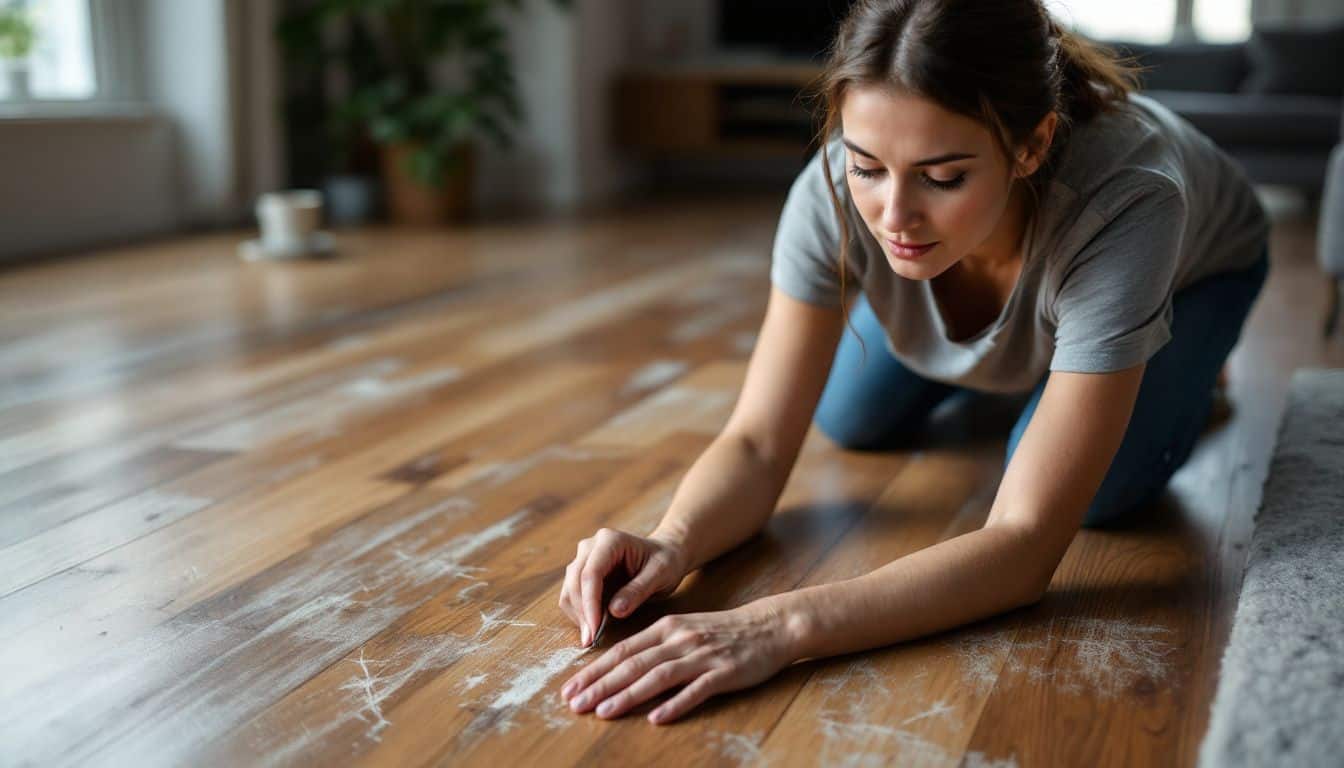Wondering how long does wood flooring last before it looks old or worn out? Solid hardwood flooring can last from 30 to over 100 years, while engineered hardwood often holds up for about 20 to 30 years.
In this post, you’ll discover the top five factors—like type of wood and foot traffic—that shape your floor’s lifespan and what you can do to extend it. Keep reading for clear answers that’ll help protect your investment.
Key Takeaways
Solid hardwood floors can hold up well for 30 to over 100 years, but engineered wood usually lasts around 20 to 30 years.
Durability differs widely by wood species—oak floors often remain sturdy for about 25 to 30 years, but certain pine floors, found in older homes, still look great after a century or more.
Choose a good floor finish; polyurethane tends to protect floors better than wax, especially in busy areas.
Try to maintain an indoor humidity level between 35% and 55%, which helps prevent issues like warping, shrinkage, and noticeable gaps.
Consider installing new floors if you spot deep scratches, warped areas, large gaps, exposed nails, or soft sections that refinishing alone won’t fix.
Table of Contents
Average Lifespan of Wood Flooring
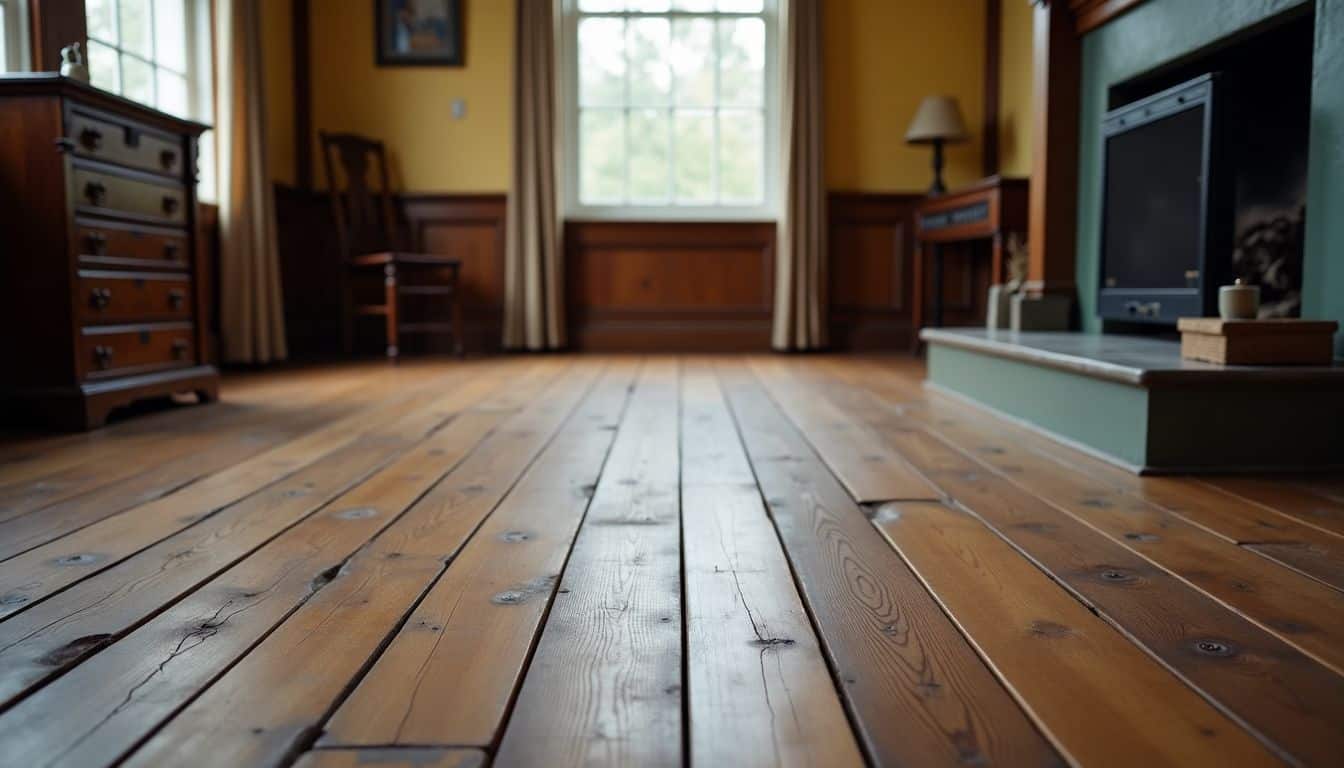
Wood flooring truly holds its value, delivering impressive durability that surpasses most other materials. Solid hardwood floors can easily last anywhere from 30 years to well over a century—with proper care, of course.
I’ve personally seen antique pine floors in historic houses that look incredible even after 100 years. On the other hand, engineered wood flooring usually holds up for about 20 to 30 years before you need to replace it.
The type of wood itself can make a noticeable difference in lifespan. Oak flooring typically serves your home reliably for around 25 to 30 years. Some sturdy hardwood floors dating back to the 1850s remain in excellent condition even today.
Compare these numbers to carpet—lasting only 5 to 15 years—or laminate flooring, which holds up roughly 10 to 30 years, and wood clearly wins.
The floor you walk on today could be the floor your grandchildren walk on tomorrow – that’s the true value of quality wood flooring.
Factors Affecting the Longevity of Wood Flooring
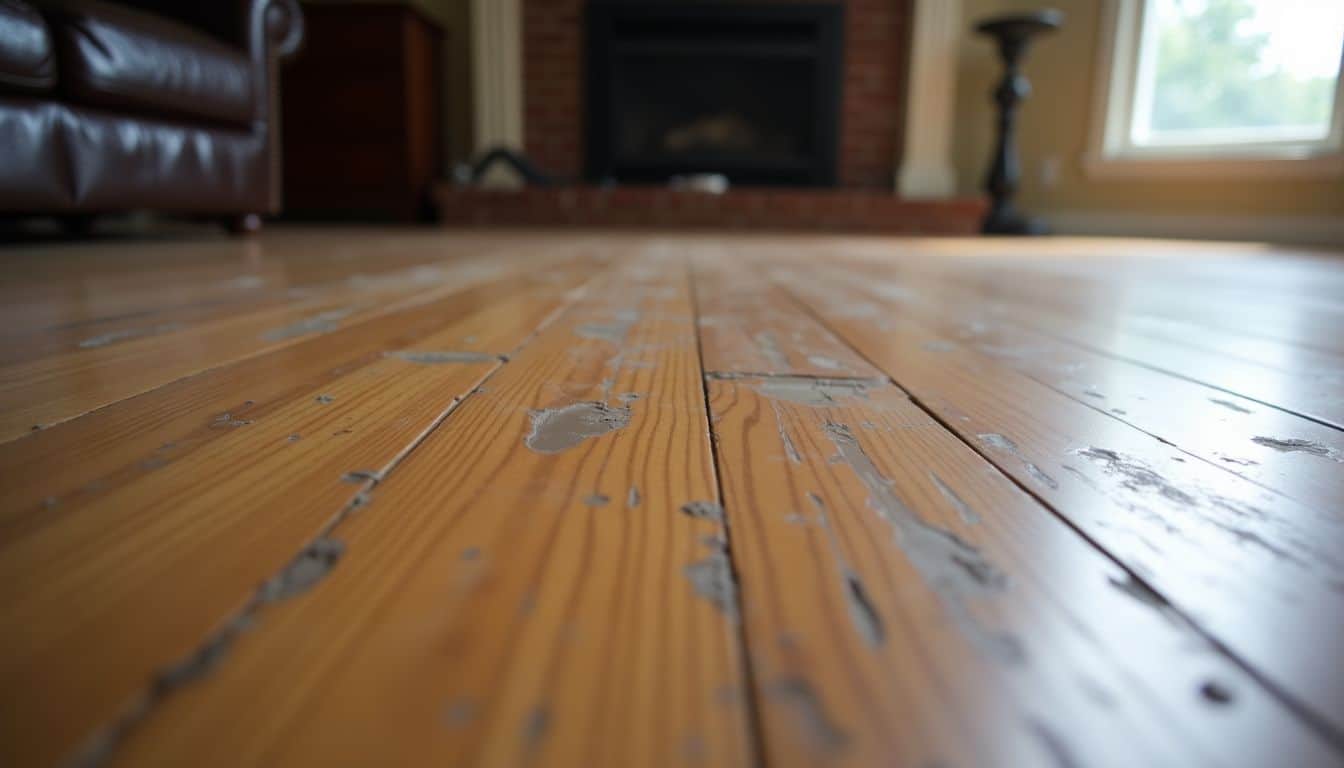
Several key factors impact how long your wood floors will last. Your floor’s lifespan depends on wood type, finish quality, climate conditions, foot traffic, and care routines.
Type of Wood
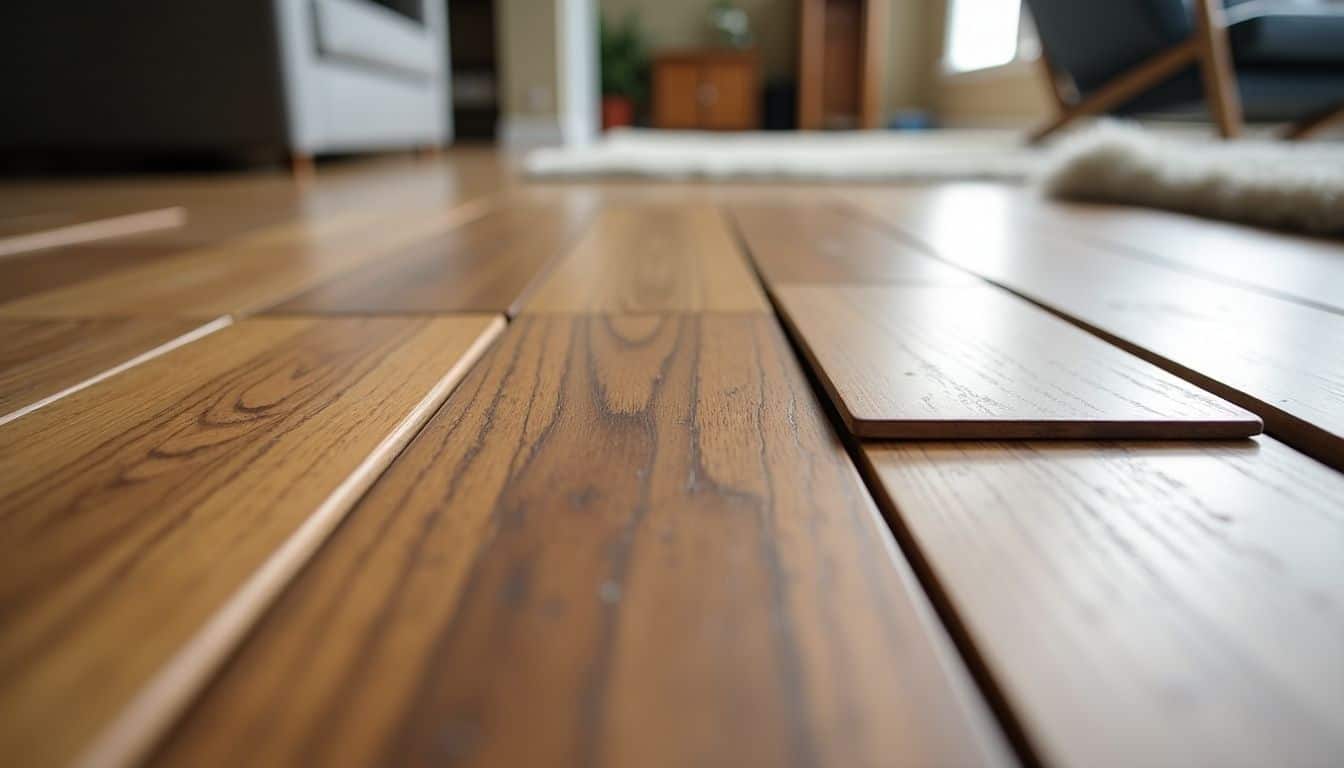
The type of wood you choose greatly affects how long your floors will hold up. Oak is popular, lasting around 25 to 30 years, thanks mostly to its hardness and attractive, classic grain.
Pine can impress you—lasting up to a century in certain cases—but tends to dent more easily than oak or cherry wood. Cherry flooring usually gives around 30 years of use and appeals to homeowners with its rich, inviting tones.
For something a bit different, bamboo floors last between 10 and 30 years and grow much quicker than hardwood species. Exotic woods, including Brazilian Cherry and Mahogany, often withstand wear better than common domestic types.
Personally, I put oak flooring in five years ago, and even with my two large dogs scrambling across it every day, it still looks amazing.
Your wood’s hardness matters greatly for durability. Harder flooring types naturally resist scratches, dents, and marks from regular foot traffic. Softer options, like pine, cost less initially but often need more care.
How well the wood resists moisture is another key detail—especially if your home is in a humid climate. The floor finish you choose will also affect how well the floor deals with spills and everyday wear.
Wood selection directly influences how effectively finishes protect your flooring.
Quality of Finish
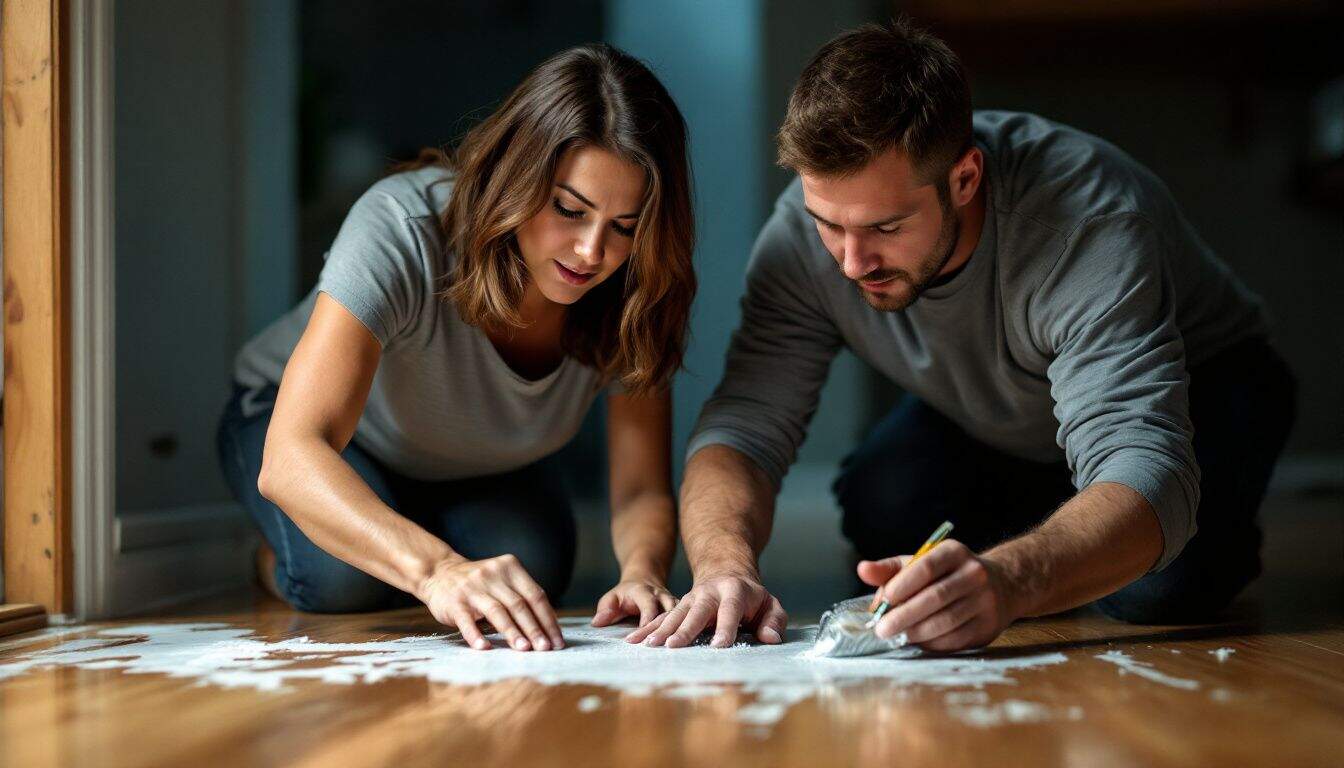
Aside from choosing the wood itself, the quality of your finish matters—a lot—for how long your floors will last. A solid finish acts like armor, protecting your hardwood against scratches, scuffs, and everyday wear.
Wax finishes offer a rich, warm color to your floors, but struggle to handle steady foot traffic. I had wax-finished oak floors at home, and every year I ended up doing touch-ups in spots that got walked on the most.
But if you’re looking for stronger protection, polyurethane finishes are a much smarter option. Water-based polyurethane dries quickly, smells less, and handles heavy use without trouble.
It comes with a higher price tag, though, but will last significantly longer. Oil-based polyurethane offers durable protection at a lower cost, but you’ll get a strong smell during application.
Last year, I used oil-based polyurethane while refinishing my basement floor and had to spend two days away from home because of the fumes.
The finish you choose isn’t just about looks—it’s the shield that stands between your floors and everything life throws at them.
Climate and Humidity Levels
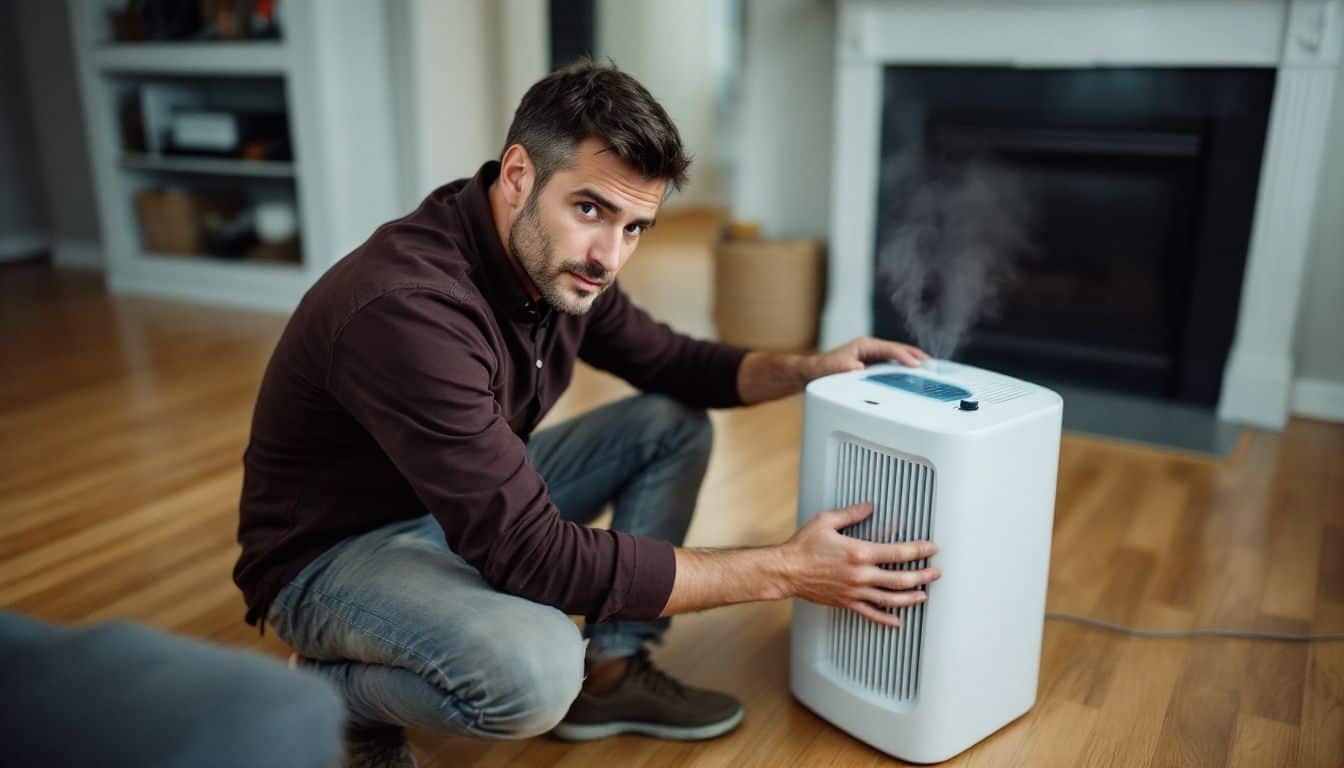
Your hardwood floors behave much like your skin—they respond to moisture levels in the air. High humidity makes wood floors expand and warp, while dry conditions cause boards to shrink, creating noticeable gaps.
The ideal indoor humidity is between 35% and 55%; anything outside this range stresses your flooring.
Many folks use dehumidifiers in the sticky summer months and humidifiers in winter, when heaters tend to dry the indoor air. Sudden temperature swings can also damage wooden floors, making them brittle and prone to cracks.
Solid oak floors suffer more from humidity shifts compared to engineered hardwood. Softer woods like pine react even more strongly to moisture and dryness due to their less dense structure.
Your subfloor quality matters too—it helps determine how effectively your wood floors handle humidity changes.
Foot Traffic
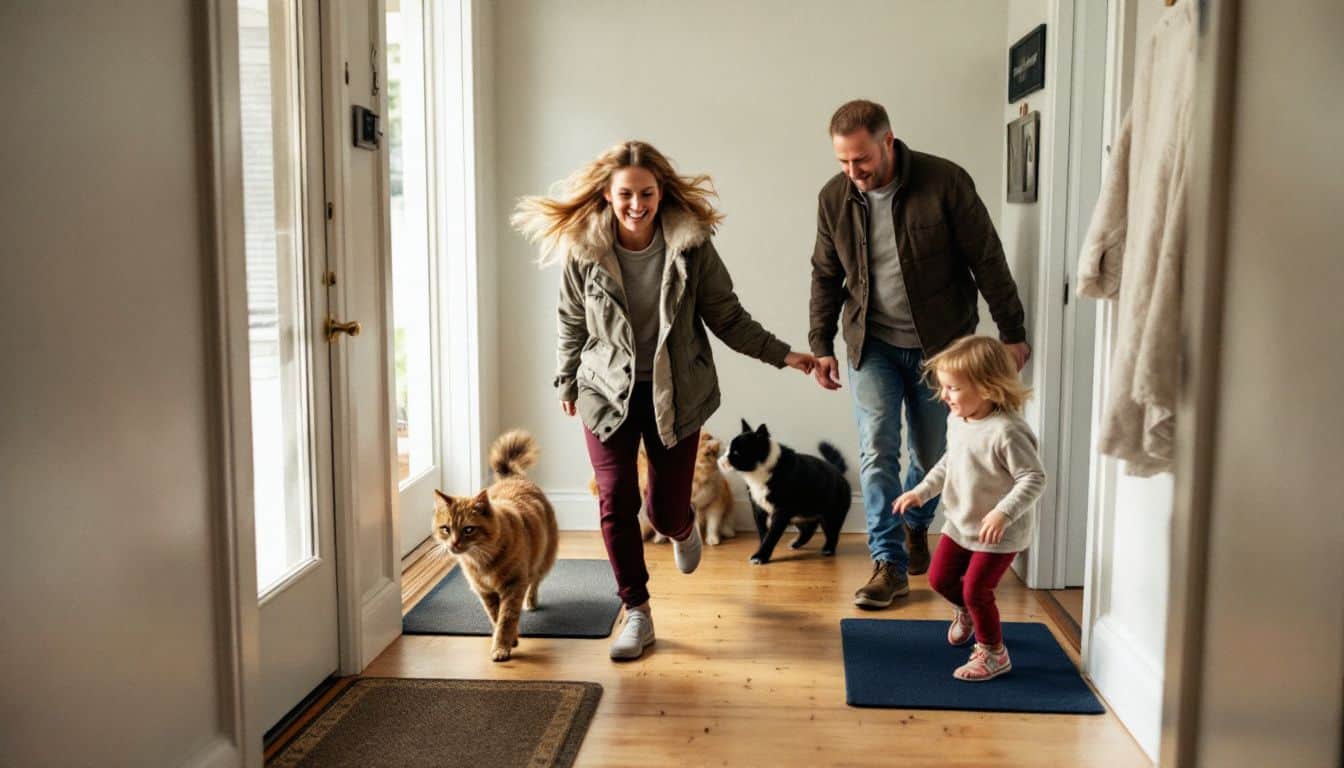
Foot traffic is the main reason hardwood floors wear out quickly. Busy spots like hallways, living rooms, and kitchens face much more stress than calm areas, such as bedrooms. Harder woods like oak hold up better under daily wear than softer types like pine.
If you have kids, pets, or lots of visitors, expect to spend more time caring for your floors. Home experts at Unfinished Man suggest placing mats at doorways, since these catch dirt and grit that scratch and damage floors.
A few protective measures can greatly prolong the lifespan of hardwood flooring in active areas of your home. Rugs and floor mats give your floor an extra barrier and soften the impact of footsteps.
Using furniture pads protects hardwood surfaces from tables and chairs sliding across them. Sweeping carelessly dropped crumbs and dirt a few times each week prevents these small particles from wearing down the floor’s finish.
Simple maintenance routines like these can keep engineered hardwood floors looking beautiful, even with heavy daily use. Over time, this little investment of energy delays expensive floor repairs by years.
Maintenance Practices
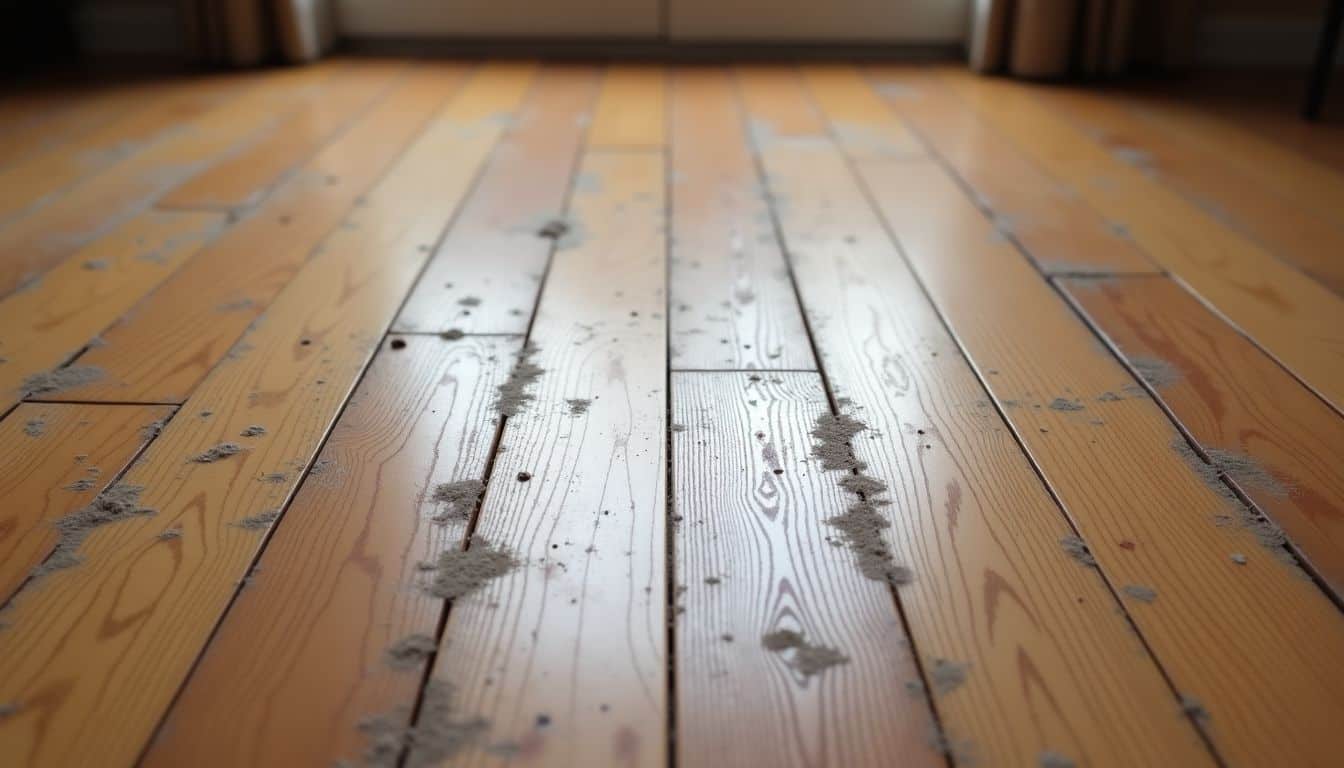
Heavy traffic on your floors means you’ll need regular upkeep to help them last longer. Effective cleaning habits make a big difference in keeping your hardwood floors looking great.
With routine care, you can stop dirt and grit from scratching up oak and pine surfaces. Doing this protects your flooring investment and keeps your home looking attractive for years.
Sweeping or vacuuming your hardwood floors every week removes dirt before it causes damage. Once or twice a month, dry mop your flooring with cleaners made specifically for wood. Every three to five years, refinish your floors to renew their protective coating and prevent moisture damage.
Each decade, doing a complete sanding and refinishing refreshes surfaces and repairs scratches. Also, check and manage humidity levels in your home to avoid warped engineered hardwood boards.
Following these easy tips can double your flooring’s lifespan—saving you thousands on costly replacements down the road.
Signs That Wood Flooring Needs Replacement
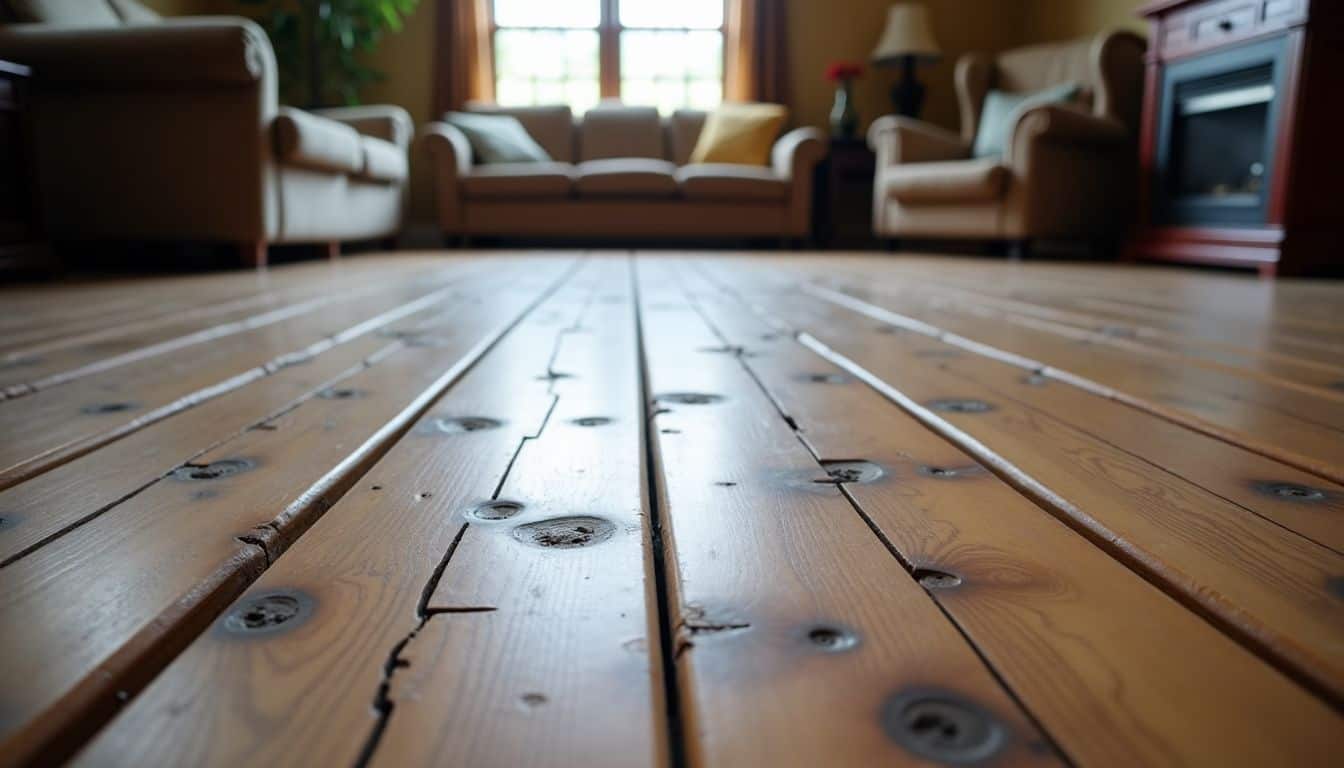
Your wood floors carry stories in their scratches, stains, and worn spots—telling you clearly when they’re ready for replacement.
- Deep scratches signal your floor has damage beyond basic repair. These grooves extend past the finish, cutting right into the wood fibers themselves, and simple refinishing won’t fix them.
- Warping caused by water damage permanently harms oak or pine wood flooring. Flooded areas soak into the wood structure, creating uneven surfaces and weakening integrity that routine care won’t restore.
- Cupping and crowning happen after moisture seeps into engineered wood floors. Edges that bend upward—known as cupping—or centers bulging upward (crowning), clearly point to moisture trapped below.
- Noticeable gaps forming between planks show significant wood shrinkage beyond normal seasonal shifts. Such gaps catch dirt, become unsightly, and may cause trips or falls in busy hallways or entrances.
- Nail heads poking above your wood floor surface make walking unsafe. This occurs as floorboards thin out from years of wear or because the plywood subfloor underneath is breaking down.
- Persistent discolored patches, which stay dark even after thorough cleaning, often hint at hidden rot beneath. No matter how carefully you maintain the surface, these marks mean internal decay is spreading.
- Floor areas squeak louder and more frequently if boards come loose or fasteners begin slipping. These noises aren’t just annoying—they clearly mean your floorboards no longer hold firmly together.
- Spongy, soft areas beneath your feet warn that sections of your wood flooring have weakened substantially. Such spots lack structural support and eventually collapse from everyday walking pressure.
How Will Wood Flooring Evolve in 2025?
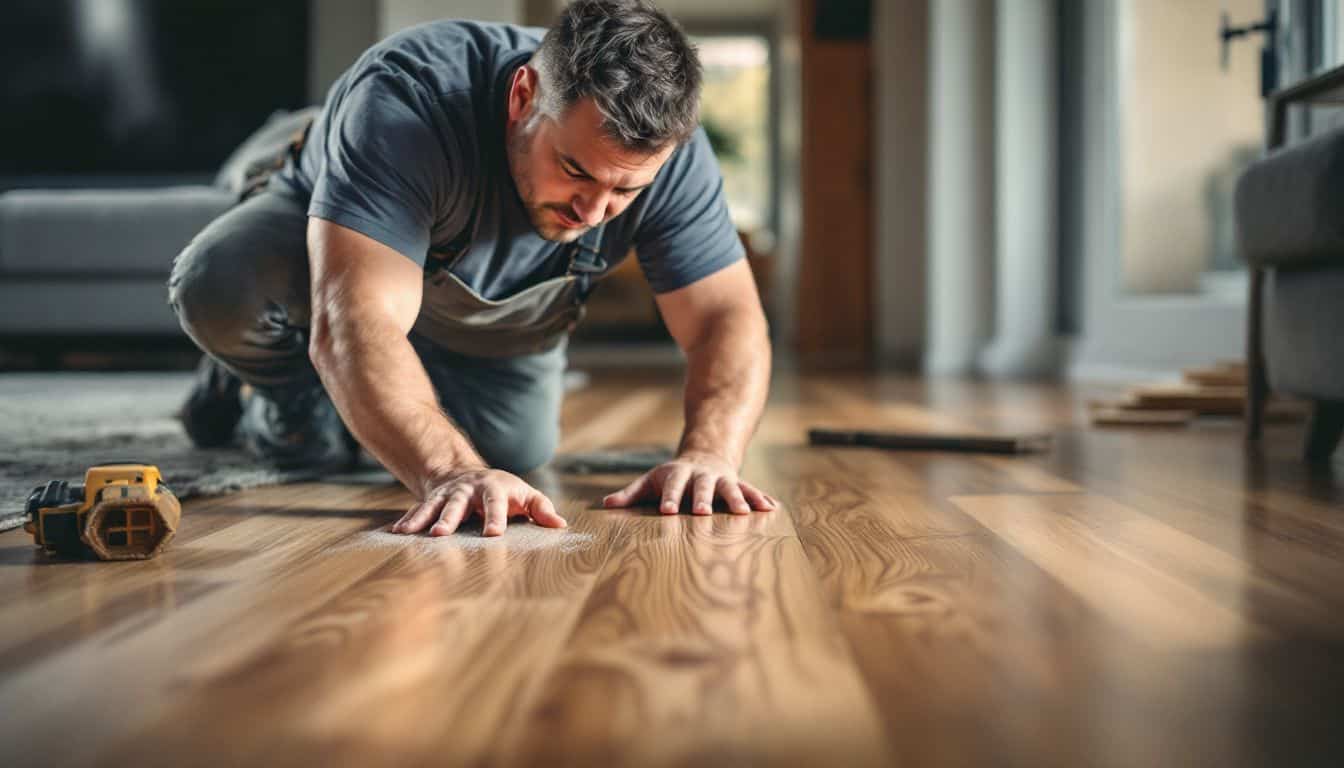
Wood flooring trends in 2025 will highlight durability and visual charm. Homeowners will favor natural shades and textures—especially warm, earthy tones—that smoothly blend rustic home decor into modern interiors.
Wide plank hardwood floors will appeal strongly to men looking for both attractive style and practical function. Lighter wood tones also stay popular, giving spaces a clean, simple feel and making rooms appear brighter and more open.
Many of my own clients mention leaning toward eco-friendly materials in their home remodeling projects. Bamboo and reclaimed wood, specifically, top their lists as stylish, sustainable flooring choices.
The growing focus on green building practices makes these options even more attractive.
Dark oak flooring combined with lighter wall tones will offer striking designs through vivid, eye-catching contrasts. This style instantly shapes rooms into bold, memorable spaces.
People Also Ask
How long does hardwood flooring usually last?
Hardwood floors typically last between 20 and 100 years. Quality hardwoods like oak can endure generations—with good care, proper installation, and regular upkeep.
What factors impact engineered hardwood flooring durability?
Engineered hardwood flooring durability depends heavily on moisture protection. Daily foot traffic, scratch protection, and the type of cleaning products used also play critical roles. In busy home areas, even top-quality floors might need quicker refinishing.
Is wood flooring worth the investment?
Wood flooring can save money over time, thanks to its long lifespan. Upfront costs are higher compared to vinyl flooring, but hardwood tends to endure much longer. The long-term savings make hardwood flooring a smart choice for many homeowners.
How frequently do hardwood floors need refinishing?
Hardwood floors generally need refinishing every 7 to 10 years. Floors in heavy-use spots may need care sooner. Refinishing floors brings them back to life, making old floors feel fresh without needing full replacements.
Does wood flooring fit well in kitchens and bathrooms?
Wood flooring can handle kitchen spaces, as long as you maintain it carefully. Bathrooms pose more of a challenge due to humidity and moisture. In these situations, engineered wood floors typically hold up better than solid hardwood, since they’re more resistant to water damage.
References
- https://europeanflooring.com/how-long-do-hardwood-floors-last/
- https://www.floorspecialists.biz/blog/articles/what-is-the-lifespan-of-engineered-hardwood-flooring
- https://www.carpetworldbismarck.com/blog/articles/how-long-does-hardwood-flooring-last
- https://www.carpetden.com/tile-101/articles/the-impact-of-humidity-on-different-types-of-wood-flooring
- https://www.angi.com/articles/how-long-do-hardwood-floors-last.htm (2024-10-31)
- https://www.fromtheforest.com/blogs/fromtheforest/8-signs-its-time-to-replace-your-hardwood-floors?srsltid=AfmBOopLud0MIYFnh-a2eSISVxvD1Qah3lCkFI2Q995ubIcYkTkNNu97 (2020-03-13)
- https://www.nationalfloorsdirect.com/learn/articles/8-Signs-That-Its-Time-to-Replace-Hardwood-Flooring-In-Your-Home (2021-08-16)
- https://www.elmwoodreclaimedtimber.com/blog/hardwood-flooring-trends/?srsltid=AfmBOooXKE2DN8aw1gef5Y_fU5a3V6laGeNN0KM7UkFnXUleR3eEn4PP (2025-01-14)

